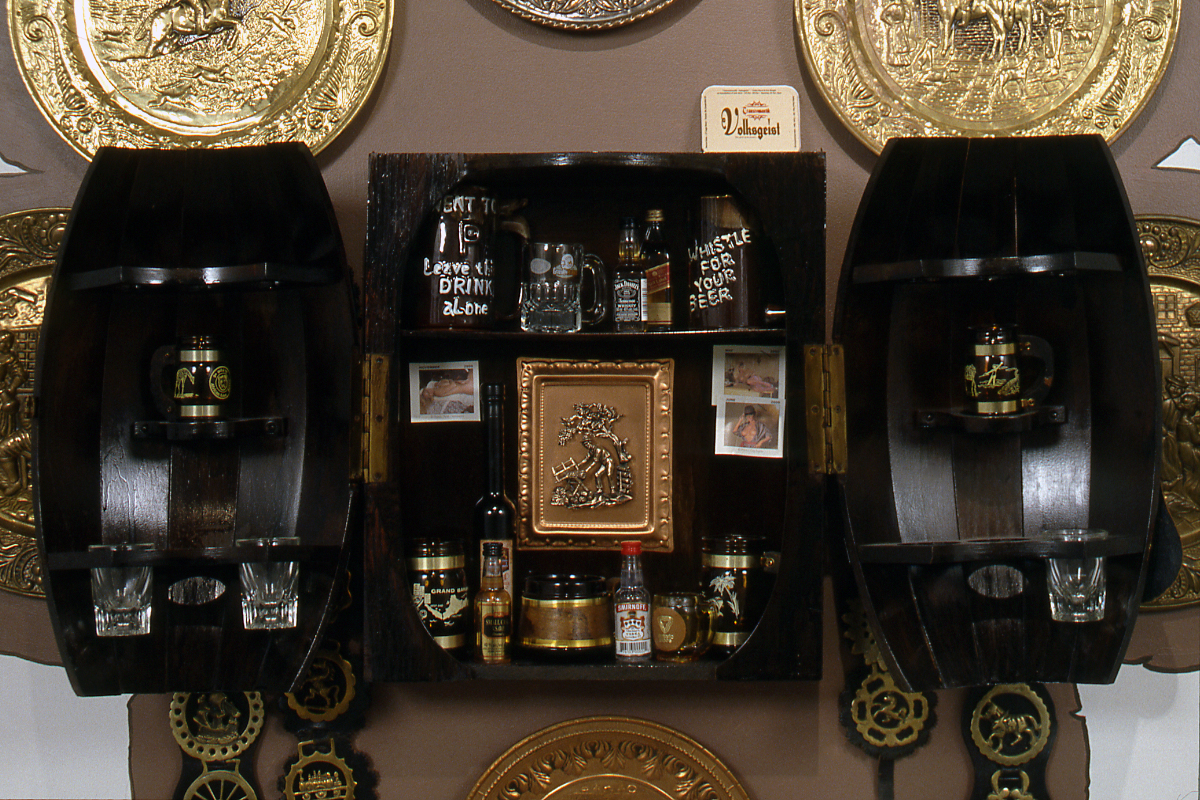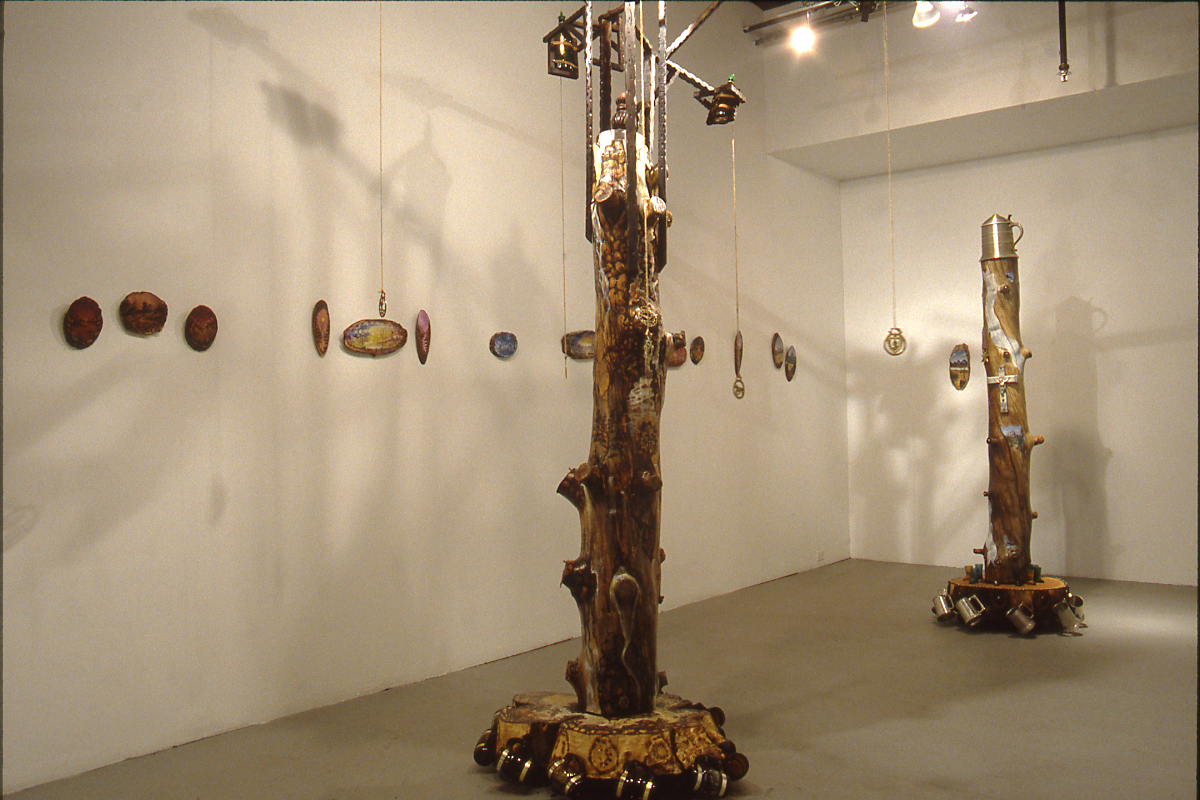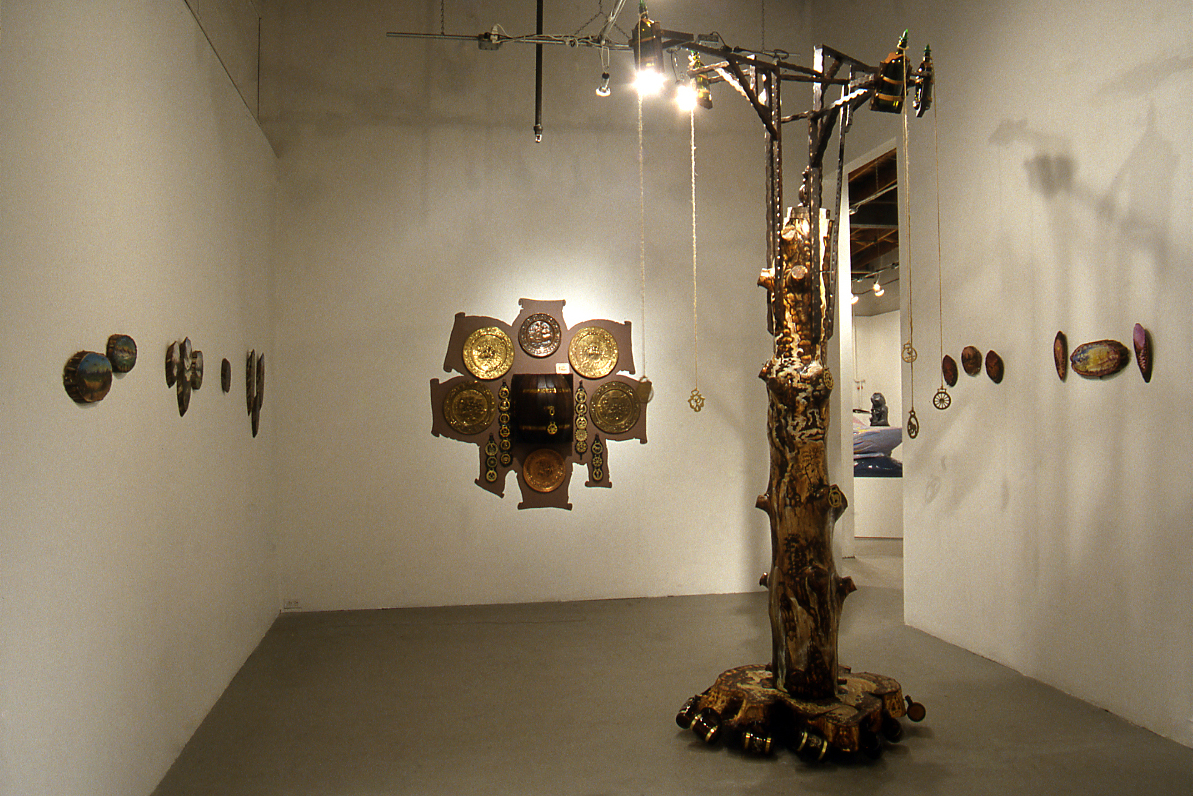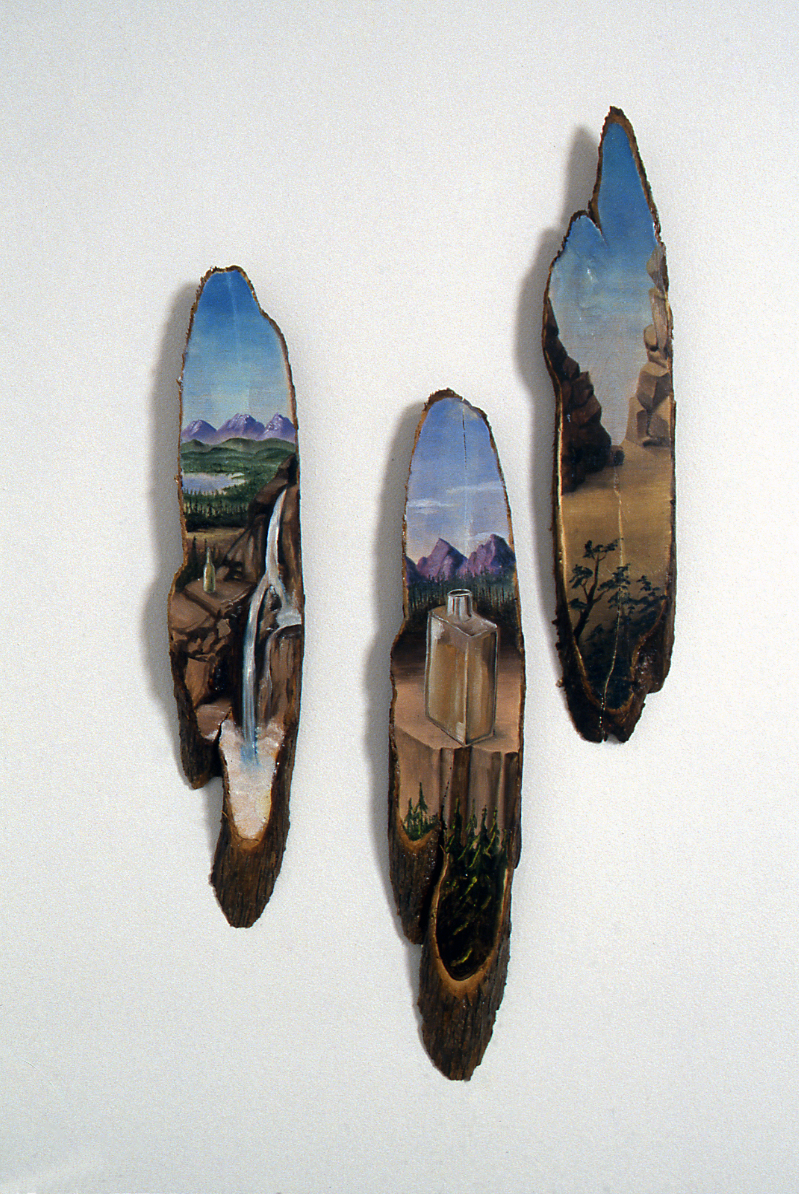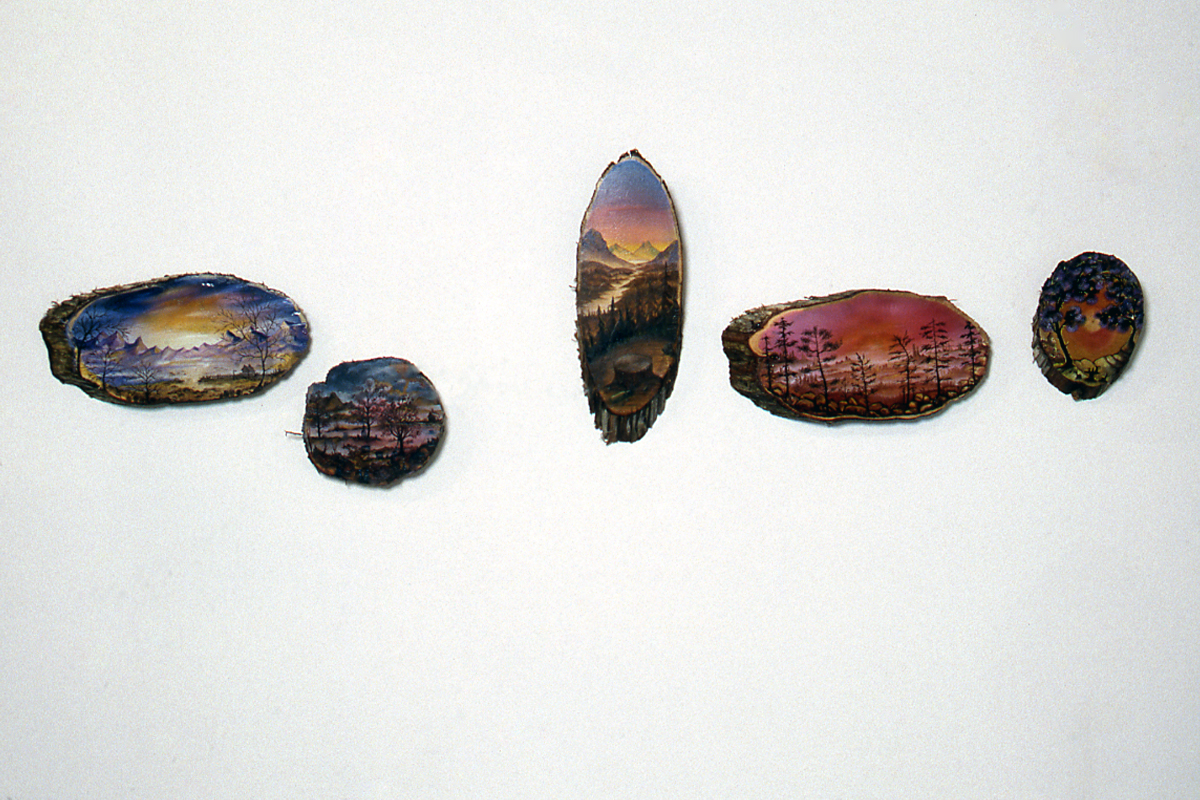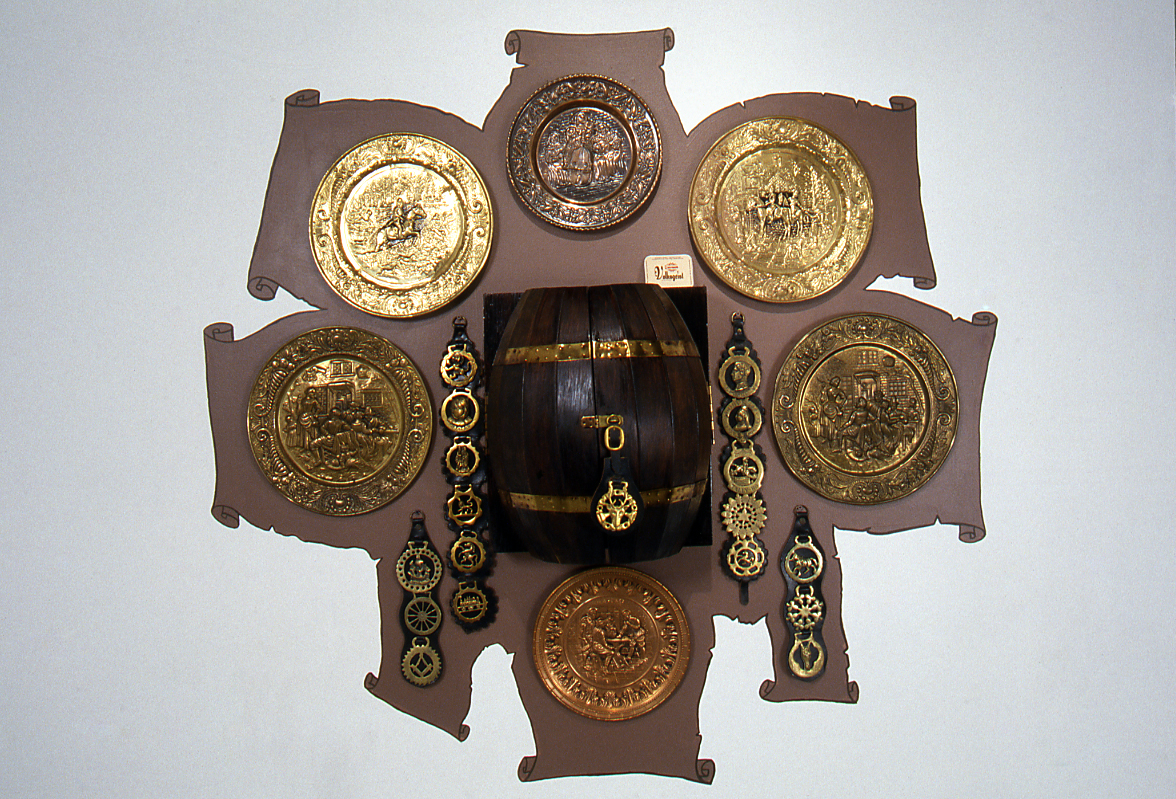Transromantik - Volksgeist is our investigation into a type of cultural connectivity which we began in 1997. Our sculptures stand as way-markers or products of a kind of cultural "family tree". It is an expression of a particular mid-European monomania and romanticism which moves from Caspar David Friedrich to King Ludwig of Bavaria, through Hitler to Walt Disney. Transromantik - Volksgeist is our latest addition to the ongoing investigation, created for Mercer Union. Volksgeist is the spirit of the people expressed through art, customs, laws, institutions, language and culture.
In this new work, the theme of 'drinking' is interesting to us because it embodies a very old and common ritual that bonds people together.
Drinking melds cultures as shown in the local celebration of Oktoberfest (the largest outside of Munich) in Kitchener-Waterloo, Ontario. Germany, Britain and others have specialised drinking cultures. Here there is still strong evidence of folk memory in the apparatus of drinking and the collective, informal rituals that surround it. Objects from pubs or bier kellers carry this memory and shared culture that is known unconsciously.
The collecting aspect of our work is as important as other aspects because we feel that its inclusion helps harness the unconscious spirit that is carried by even the most humble objects. We live in a culture where commercialism is overtaking the social importance and sense of community that was provided by local public drinking houses.
This work is a preservation of the commonly held sense of cultural connectivity, celebrating the spirit of the people.
- Cathy Ward, Eric Wright
It was not that German idealism collapsed; rather, the age was no longer strong enough to stand up to the greatness, breadth, and originality of that spiritual world, i.e. to truly realise it.
Martin Heidegger, Introduction to Metaphysics
I
Truth is structured like fiction.
Jacques Lacan ¹
The license of Romanticism is issued by our exclusion from the Thing. We’ll never know it, never get it. When Kant, and then the rest of western culture, woke from its "dogmatic slumber," it was to this, our exile in the phenomenal world. "We can know a priori of things only what we ourselves put into them."² We can’t see the wood for the trees. To be one of the first to really get that, imagine. Can’t see for looking, can’t help but seeing the spookily transpersonal, impersonal categories of human being. Kant counted them, twelve, immutable and absolute, but not for long. Romance began when imagination woke up and saw itself everywhere.
Potentially cosy option, make-believe, the soft-core porn of Romantic landscape painting, Nature in the knickers of Notion. But take it further, as with Cathy Ward and Eric Wright’s sculptural installation Transromantik – Volksgeist, push Romanticism to its limit, objectify the processes of objectification, and something else begins to happen. Husserl redefined the Thing as the ideal limit of all its possible modes of representation, an asymptotic point. Something similar happens in Transromantik – Volksgeist. The work of fantasy normally accomplished by the gaze, which transmutes this tree into a demon, this one a sylph, all the poetry of the encounter with the object is here accomplished by the object itself, which is fantastically overdetermined. All the work has been done here, you need bring nothing to this encounter. As such, we are confronted with the process of gazing. Looking on, we see our looking looking back at us. More than this, we learn about the gaze’s (transpersonal, transcultural) location.
II
Process of making folkways: Although we may see the process of making folkways going on all the time, the analysis of the process is very difficult. It appears as if there was a "mind" in the crowd which was different from the minds of the individuals which compose it.
W. G. Sumner ³
If Kant realized that mind belonged to no one and effectively was reality, it took Hegel to realise that this mind is culturally embodied, local and evolving. The Volksgeist, the spirit of the people expressed itself through art and customs, laws and institutions, language and culture. The spirit was the reality, the individual the abstraction. It is at this point, historically, that a certain indelible reflexivity entered cultural practice. "Art is man’s nature" realised Burke in England at the same time.⁴ Again we see the room for Romance. The "rediscovery" of myths and folklore, the culture’s very deliberate plundering of itself, acquired its force and value at this point, because it is precisely at this point that myth became mythic, the expression of spirit in the idiom of culture. The very idea of the Zeitgeist, the spirit of the time, began then, and in Germany.
An odd doubling occurs. We find the culture prescribing to do what it was already doing. Only in partaking of, communing with the Volksgeist did the individual acquire their individuality. Thus the sudden sacred aura of going down to the local, to the pub. If customs and shared values – Sittlichkeit – were the cumulative wisdom of the spirit, then the pub and public institutions were the place of their exchange. Place as embodied knowledge is what twenty-first century cognitive scientists are just waking up to now. Hegel knew this long ago. The pub is the spirit’s site of self-communion. It knows how to drink.
We know where this is leading. Germany’s genius with itself, the synergy of its cultural reflexivity and self-commitment was precisely what Hitler co-opted to make himself instant myth. But look around. Disney too, that other empire builder, myth-maker, lifted his fantasy castles and modus operandi directly from King Ludwig II. Our culture is indelibly branded with the tropes of German idealism, from Lacan to The Matrix, from cognitive science to virtual reality. Ward and Wright’s sculptural installation Transromantik – Volksgeist, evokes the primal scene of western culture awakening to itself, actually locates it. In doing so it completes the project of Romanticism and transmutes the imaginary landscape into the landscape of the Imaginary.
